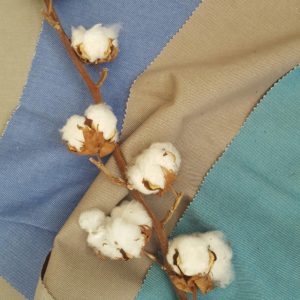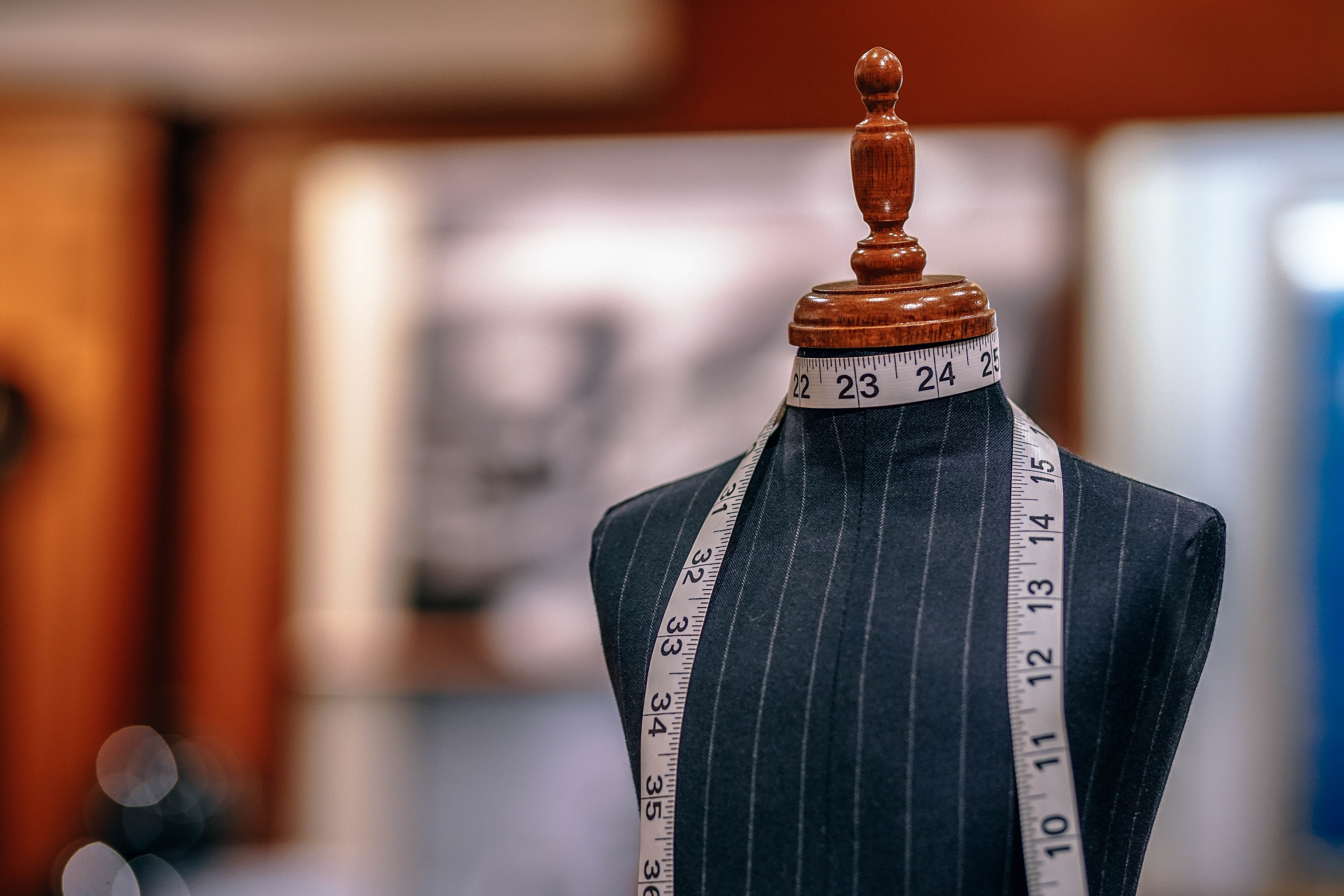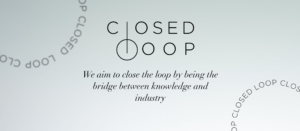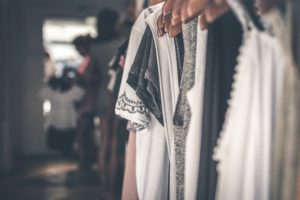We’re in the middle of severe climate challenges and the fashion industry has for many years nourished a buy-and-throw-away-culture, that doesn’t sustain our resources being used efficiently enough. Call it circular economy, call it closed loop, call it cradle-to-cradle—but no matter what, the key is, that whatever kind of material enters the fashion system it has to be high enough quality to stay there for multiple uses and to be able to be reused after final end use, so we don’t have to enter new resources.
We already know that we’re living on borrowed time on an overpopulated earth and that the middle class and their funds are rapidly growing. So we have to change our business model to make the resources last—if we want clean water and nature to be for all of us—but also, the simple matter of keeping businesses relevant and alive. And fact is we’re already at a tipping point when it comes to not surpassing increasing temperatures for the earth within 10 or 15 years and we’re already on the path of destroying the earth to a point of no return.
We’ve been blindly using the resources, we for too many years considered infinite. So when Justin Bieber announces that he has so many pairs of underwear, that he merely grabs a new pair and throws the used ones away, that taps right into the culture of shop, shop, never stop as a status symbol, but without consideration for the environmental costs or the people in the business of making, for example, underwear.
Some industries are very good at putting materials into a circular system—in Denmark we have an extremely well functioning return and reuse system for used bottles. When it comes to the fashion business, a gnarly 1 percent of all the textile products being produced are reused for new fibres. Let’s face it—that’s throwing money down the drain and is just bad business. It’s a two-sided sword: fashion companies need to change their business models and consumers need to buy less, better and more sustainable products.
At Closed Loop we serve as a consulting and collaborative partner in incorporating social and environmental concerns into fashion businesses in a successful and lasting way. We guide and support fashion companies in the implementation of sustainable development strategies with a strong focus on textiles and on the full life cycle of the product—from sourcing the raw materials to production, social mindfulness, transportation, consumer engagement, reuse purposes and the very last link of recycling.
In the Photo: Closed Loop’s mission and aim. Photo Credit: Closed Loop
Closed Loop looks into the entire value chain. For example, a company might have a sustainable material strategy, but if their product is not designed accordingly, then, roughly put, it doesn’t matter. Panties made from organic silk that have to be dry-cleaned are not a sustainable product even though the materials are, because they’re not functioning, as an everyday product should. So even though they might last forever—because they are never used—that is, bottom line, a waste of resources. We’re often contacted by product developers and designers or CSR-responsibles, because they’re the ones who are most hands on in terms of being in contact with the products and the supply chain. Even companies with a sustainable mindset will be surprised, because there are so many parameters to be considered. There is always the question of what is best: a premium product with a 10 year lifespan, but without reusable material qualities, or a less durable product only lasting three years, but with materials capable of being reused and recycled. It’s a hard one. We recommend that you look at your product’s life span: preferably it should be of such nature that it can be reused for it’s original purpose many, many times, before entering and being broken down in a recycling process. The circle should be from high quality product to high quality product.
We need to aim for a paradigm shift when it comes to shopping for fashion: buy less, buy better and use our products for a longer time. There’s a budding attention from consumers interested in sustainable choices. The new visitation plant, sorting plastic from our household waste in Copenhagen at Amager Ressoucecenter, is only 1,5 years old and it is overwhelmed by the visitors is gets—that being the average Copenhagen citizens interested in how plastic is reused. This is a growing tendency—consumers worrying about the consequences of their consumption. Food and electronics are often more easy areas to navigate, because they have an acknowledged certification scheme. Clothes and textiles does not and consumers are left on their own to figures out, whether or not the brands they are interested in, are sustainable. This information can sometimes be found on the brands’ websites, but it is not available in stores, on the hangtag, labelled within a recognisable certification scheme. It’s not that there are lacking certifications, it’s that we have not yet found a way to communicate them properly to the consumers, whether it’s the social and environment footprint of a garment or the longevity of it—we need the full package.
In the Photo: Amager Ressoucecenter in Copenhagen. Photo Credit: Amager Ressoucecenter
We believe in a rating system for clothes and textiles and this has to done both nationally and internationally, because fashion items are one of the most popular commodities to cross boarders. This is one of the main challenges and has to be addressed for a more sustainable fashion industry to succeed: a streamlined certification scheme or a rating system that translates across borders and is easy for consumers to understand. Demands are starting to change and consumers don’t necessarily just want fashion companies to supply them with new clothes, they want the right kind of clothes. A recent rapport from The Business of Fashion shows that 77 percent of Millennials want the sustainable choice and 66 percent are willing to pay more. That is the future speaking right there.
Related Articles:
![]() “SLOW FASHION, ETHICAL FASHION” by Angela Bell
“SLOW FASHION, ETHICAL FASHION” by Angela Bell
![]() “FASHION ‘SLOWDOWN’ MISSION” by Jessica Saade
“FASHION ‘SLOWDOWN’ MISSION” by Jessica Saade
![]() “DIMMBLÁ: CLEAN FASHION” by Oliver Speakman
“DIMMBLÁ: CLEAN FASHION” by Oliver Speakman
One of the most important elements for fashion companies to engage in is figuring out their core values. Some are doing very well, combining good business with good doing. Unfortunately, too many companies still only have a CSR policy because they have to, not because they want to. Some think it’s enough to do a collaboration every once in a while, donating the surplus to charity. It will be so much more beneficial for the business to do CSR work connected with their core values and core business. The core business of fashion companies is clothes, so donating ten soccer balls to an underprivileged soccer team is not a reflection of your core business. Instead, why don’t you support the seamstresses that make the soccer shirts, making sure their workplace is sustained? This might seem irrelevant—doing good is doing good, right? Well, it will be much more significant to your business’ self-perception and values, if your CSR work reflects and is implemented in your core business, is long-termed and makes a difference. So lets eliminate the doing good for PR reasons, shall we?
Another breaking point for fashion companies in terms of sustainability is their material strategy. Going from conventional, non-sustainable materials to sustainable ones is not necessarily an easy choice to make, because this is often where money enters the picture.

In the Photo: The Fabric Source is a sustainable textile library, based in Copenhagen, and an external partner of Closed Loop, which provides the company with consulting on textile choice. A big part of their collection consists of organic cotton as they want to encourage their clients to shift from regular cotton to this more responsible alternative. Photo Credit: Closed Loop
It can prove hard to exchange the materials used, if you can see that those new, sustainable materials are going to eat up a part of the revenue you have gotten used to earning. CEOs and CFOs often have a hard time wrapping their heads around the fact that a given product will increase its material cost by, let’s say 15 percent, to make it sustainable. Fact is, most changes of material strategies will have a negative financial affect on the company. This is where we at Closed Loop, have to do our hardest work, talking the case that those 15 percent increase in material cost will pay off and come back tenfold in many other aspects of the company. It will for instance decrease risks of PR crisis and increase brand value. Brand value is not as easily measured as bottom line numbers, but in the long run, it will prove to be just as valuable in term of attracting the most qualified employees and a loyal costumer base. As soon as you make the effort to look into your product and your materials you are encouraging transparency and minimising the risk of production trouble.
Photo Credit: Artem Bali
In short, you have to take those 15 percent from the product and spread it out onto the entire company and the math of it will look a whole lot better. And this is not even considering politics and legislation. But with climate changes in mind, it seems like this will only be a matter of time.
So why not base your decisions on good common sense and do the work because you want to and not because it is imposed on you. This is not only good common sense, it is also good business sense, because it will allow you to be a first mover in the industry and to make the transition at a pace reasonable for your organisation and not by the hands of politicians—the latter being a way more expensive choice, without a doubt, because you’ll likely have to put in much more money and man-power to meet requirements on a time sensitive schedule.
These are just a few of many points to the case of why sustainability in fashion is good business.













